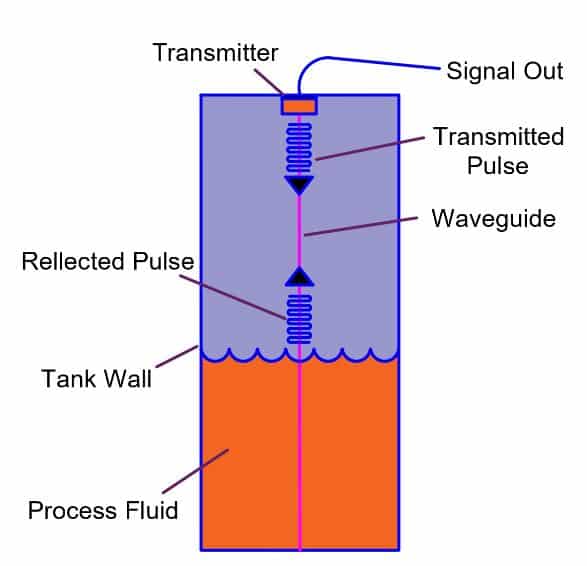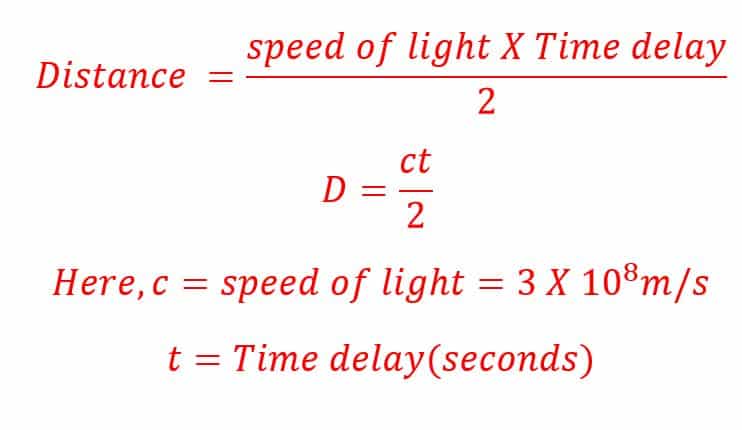In this article, we will discuss the working of contact type guided wave radar level transmitter. Guided wave radar(GWR) uses microwaves. The important feature of microwaves is that their reflection depends on the energy reflection property of the material. The reflection of microwaves does not depend on the material temperature, viscosity, dust, and pressure. Because of all these features, the accuracy of guided wave radar is excellent.
The other names for Guided wave radar (GWR) are time domain reflectometry (TDR) or micro-impulse radar (MIR).
Operating principle of Guided Radar Level transmitter
The guided wave radar (GWR) is mounted on the top of the vessel whose level is to measure. The probe of GWR is installed inside of the tank that covers the entire depth of the vessel. The probe guides the microwaves and directs the waves along with the probe without scattering. The GWR transmitter sends the low-energy microwave, traveling at the speed of the light, down the probe. When these microwaves hit the material in the vessel, a large portion of microwave energy reflects back. The transmitter of the GWR receives the reflected waveform.

The guided wave radar level transmitter calculates the time difference between sending and receiving waves (echo waves). The microcontroller of the radar transmitter computes the distance or depth of the vessel using the following mathematical expression.

By measuring distance, the level transmitter shows the level of the liquid.

A large portion of the microwaves reflects after hitting the first object of the vessel. However, the balance microwaves keep on traveling down the vessel and hit the second object. On hitting the second object, the microwaves reflect and thus the transmitter receives the second echo. Thus, it is possible to know the interface between the two or more liquids at a point below the first liquid level.
The beauty of these characteristics of guided wave radar is used for measuring the interfaces between the liquids, such as oil and water, having different dielectric constants.
Advantages of Guided Wave Radar Level Transmitter
- There are no moving parts. Therefore, no need for maintenance.
- no need of re-calibration
- It measures both level and interfaces accurately.
- The process condition, such as density, temperature, pressure, etc., does not affect the measurement accuracy. Therefore, there is no need for measurement correction in the measured value.
- Measurement accuracy is unaffected by vapor and turbulence.
- The GWR technology is even suitable for small tanks or the tanks having intricate tank geometry, and interfering obstacles.
- Allows for easy upgrade
- Top-down installation minimizes the risk of leakages
- GWR is suitable for liquids, sludges, slurries, and some solids.
Limitations
- The probe should not come in direct contact with the metal because the metal can impact the microwave signal. The solution to this problem is the use of a coax-style probe.
- If used for sticky materials, the material can build up on the probe, resulting in affecting the measuring accuracy. This problem is more prone in the small diameter vessel. The GWR with advanced features having build-up detection is the solution to this problem.
Read next: